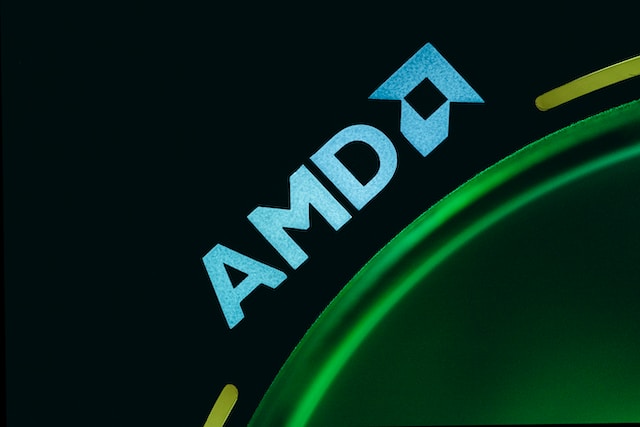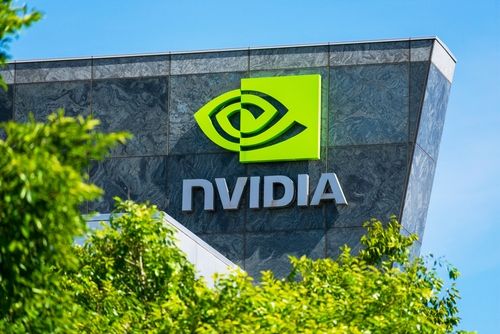Vitalik Buterin อธิบาย 3 วิธีที่แผนงานที่เน้นการสะสมของ Ethereum สามารถแก้ไขปัญหาไตรภาคีได้

Vitalik Buterin ผู้ร่วมก่อตั้ง Ethereum ทบทวน แผนงานปี 2023 เพื่อหารือเกี่ยวกับอนาคตของเครือข่าย เขากล่าวว่าแผนการขยายขนาดของ Ethereum ได้พัฒนาจากโปรโตคอลการแบ่งส่วนและเลเยอร์ 2 ไปสู่แผนงานแบบ Rollup-centric ซึ่งขณะนี้เป็นจุดสนใจในปัจจุบัน Buterin อธิบายว่าการโรลอัพจะแบ่งงานระหว่างเลเยอร์หลัก Ethereum และ L2 เนื่องจากการอัพเกรดเช่น EIP-4844 ทำให้ตอนนี้ Ethereum L1 จัดการข้อมูลได้มากขึ้น และ Rollup ต่างๆ (L2) ก็ทำงานเหมือนชาร์ด ผู้ร่วมก่อตั้งอธิบาย นอกจากนี้เขายังกล่าวอีกว่า Ethereum จะเสร็จสิ้นการพัฒนาโซลูชันการปรับขนาดแบบโรลอัพ และหลีกเลี่ยงความท้าทายด้านความปลอดภัยและการกระจายอำนาจของเครือข่ายที่ยังคงเหมือนเดิม ในขณะเดียวกัน The Surge ซึ่งหมายถึงชุดการอัพเกรดเพื่อปรับปรุงความสามารถในการปรับขนาดและประสิทธิภาพของ Ethereum ได้รับมอบหมายเป้าหมายหลัก 4 ประการ เป้าหมายแรกคือการนำธุรกรรมต่อวินาที (TPS) ที่ 100,000 บนเลเยอร์ 1 และเลเยอร์ 2 รวมกัน ประการที่สองคือการรักษาการกระจายอำนาจและความแข็งแกร่งของเครือข่ายหลัก ประการที่สามคือเพื่อให้แน่ใจว่า L2 บางตัวสืบทอดคุณสมบัติหลักของ Ethereum อย่างสมบูรณ์: ไม่ไว้วางใจ เปิดกว้าง และต้านทานการเซ็นเซอร์ สุดท้ายนี้ ต้องการส่งเสริมการทำงานร่วมกันสูงสุดระหว่าง L2 ดังนั้น Ethereum จึงรู้สึกเหมือนเป็นระบบนิเวศเดียว ไม่ถูกแยกออกเป็นบล็อกเชนที่แยกจากกัน เพื่อให้บรรลุเป้าหมายเหล่านี้ Buterin ชี้แจงว่าการทำลายขอบเขตสามประการของความสามารถในการปรับขนาดนั้นเป็นเรื่องยาก แต่ก็ไม่ใช่ว่าจะเป็นไปไม่ได้ Buterin นำเสนอ 2 แนวทางในการแก้ปัญหาสามประการของการกระจายอำนาจ ความสามารถในการปรับขนาด และความปลอดภัย วิธีแรกคือการสุ่มตัวอย่างความพร้อมใช้งานของข้อมูลด้วย SNARK ซึ่งจะช่วยให้โหนดตรวจสอบได้ว่าข้อมูลมีอยู่และการคำนวณถูกต้อง SNARK (ข้อโต้แย้งแห่งความรู้ที่ไม่โต้ตอบโดยย่อ) ไม่น่าเชื่อถือและไม่จำเป็นต้องตรวจสอบ แนวทางถัดไปคือสถาปัตยกรรมพลาสมา ซึ่งเกี่ยวข้องกับการลดภาระการประมวลผลธุรกรรมและการตรวจสอบข้อมูลให้กับผู้ใช้ด้วยวิธีที่ชาญฉลาดและเข้ากันได้กับสิ่งจูงใจ Buterin แนะนำว่าการแก้ปัญหา trilemma จะต้องอาศัยวิธีการขั้นสูง เช่น SNARK และ Plasma ไม่ใช่แค่การแก้ไขซอฟต์แวร์ง่ายๆ เท่านั้น ด้วยเหตุนี้ PeerDAS และการปรับปรุงอื่นๆ จึงมุ่งหวังให้ Ethereum สามารถปรับขนาดได้มากขึ้นโดยการกระจายข้อมูลผ่านเครือข่าย แม้ว่า Dencun จะอัปเกรดความพร้อมใช้งานของข้อมูลให้ดีขึ้นด้วยการนำเสนอข้อมูลขนาด 375 kB ต่อสล็อต 12 วินาที Buterin กล่าวว่ายังคงจำกัดจำนวนธุรกรรมอยู่ ในกรณีของการสุ่มตัวอย่างความพร้อมใช้งานของข้อมูลเพียร์ จะใช้ "blobs" ของจุดข้อมูล โหนด Ethereum จะสร้าง Blob ใหม่ทั้งหมดโดยใช้เพียงชุดย่อยของตัวอย่างเหล่านี้ จากนั้นในการสุ่มตัวอย่าง 1D แต่ละโหนดจะฟังข้อมูลบางส่วนที่กำลังออกอากาศ โหนดสามารถแชร์ตัวอย่างข้อมูลได้โดยไม่ต้องดาวน์โหลดข้อมูลทั้งหมด Yo @VitalikButerin บทความที่ให้ข้อมูลมาก มีคำถามสองสามข้อสำหรับคุณ — ซีราเบตส์ (@Zeerabets) 17 ตุลาคม 2024 The Ethereum co-founder explained that while PeerDAS allows nodes to request samples from others outside their subnet, there is a more conservative approach to using SubnetDAS using the local subnet. With that, the blog underlines that the goal is to increase the data per slot to 16 MB, which would result in a potential throughput of around 58,000 TPS. Buterin writes, “And so ultimately we want to go further, and do 2D sampling, which works by random sampling not just within blobs, but also between blobs.” Buterin underlines that the next step is rolling out PeerDAS and then increasing the blob count. However, the long-term goal is to reportedly move beyond 1D DAS and develop 2D Data Availability Sampling (DAS) to allow sampling both within and between blobs. Buterin is also of the view that Ethereum needs to move away from the mathematical technique of KZG commitments and look toward a quantum-resistant, trusted-setup-free alternative like more advanced STARKs. In the meantime, Ethereum needs to choose between 2D DAS and 1D DAS. There is a trade-off in both cases between efficiency and simplicity. The former offers the highest scalability but is more complex, while the latter is easier to manage but has a lower data capacity. However, Buterin points out that Plasma could reduce the need for DAS. In this case, the trade-off would be a change in Ethereum’s architecture as reliance on users to handle data would increase. Buterin also suggests that if data compression techniques are implemented, it could reduce the need for advanced 2D DAS. Data compression looks at cutting the size of each transaction on-chain to improve scalability. Ethereum could use different methods of compression like zero-byte compression, signature aggregation, Irrespective of the method used, the technique wants to make each transaction smaller in terms of bytes to process many more transactions within the same data space. This will be a benefit but there are trade-offs in this case as well. For instance, Buterin explains that data compression would need switching to BLS Signatures, which will need major development. Replacing addresses with pointers is also complex for the client code. Overall, these changes could potentially make it harder to verify or audit transactions and could create problems for tools that rely on full transaction data. That said, Buterin explains that all the current scalability solutions struggle in various aspects. Therefore, the Plasma scaling solution could become powerful as it utilizes an operator to publish blocks off-chain while putting the Merkle roots of those blocks on-chain. Of course, bringing them to production remains a huge task. Achieving dependency on L2 proof systems is another problem statement for Ethereum. Buterin says that most rollups lack full trustlessness due to the presence of a security council. With the main aim being achieving Stage 2 status, Buterin suggests formal verification techniques along with creating multiple proof systems and employing a multisig mechanism. Since advanced L2 proof systems will help reduce MEV stress on layer 1, scalability will be achieved as a result. Among these developments, improvements in cross-L2 interoperability remain important. Buterin says that better interaction between L2s and L1 will enhance Ethereum’s overall usability. Unlike the other suggested changes, interoperability is not one technical upgrade. However, it is crucial to Ethereum’s long-term scalability roadmap. Ethereum กำลังมุ่งเน้นไปที่แผนงานแบบโรลอัพที่เน้นศูนย์กลาง

การใช้งาน PeerDAS มาพร้อมกับข้อด้อย
หาก Rollups และ EIP-4844 เป็นวิธีการปรับขนาด ETH แล้ว DAS จะทำให้มันไม่น่าเชื่อถือได้อย่างไรโดยไม่ทำให้การกระจายอำนาจวุ่นวาย? แล้วจะเกิดอะไรขึ้นถ้า L2 เหล่านี้กลายเป็นไซโลเล็กๆ ของตัวเอง? ETH จะ...Ethereum can look at data compression technique
replacing addresses with pointers and custom serialization for transaction values.







